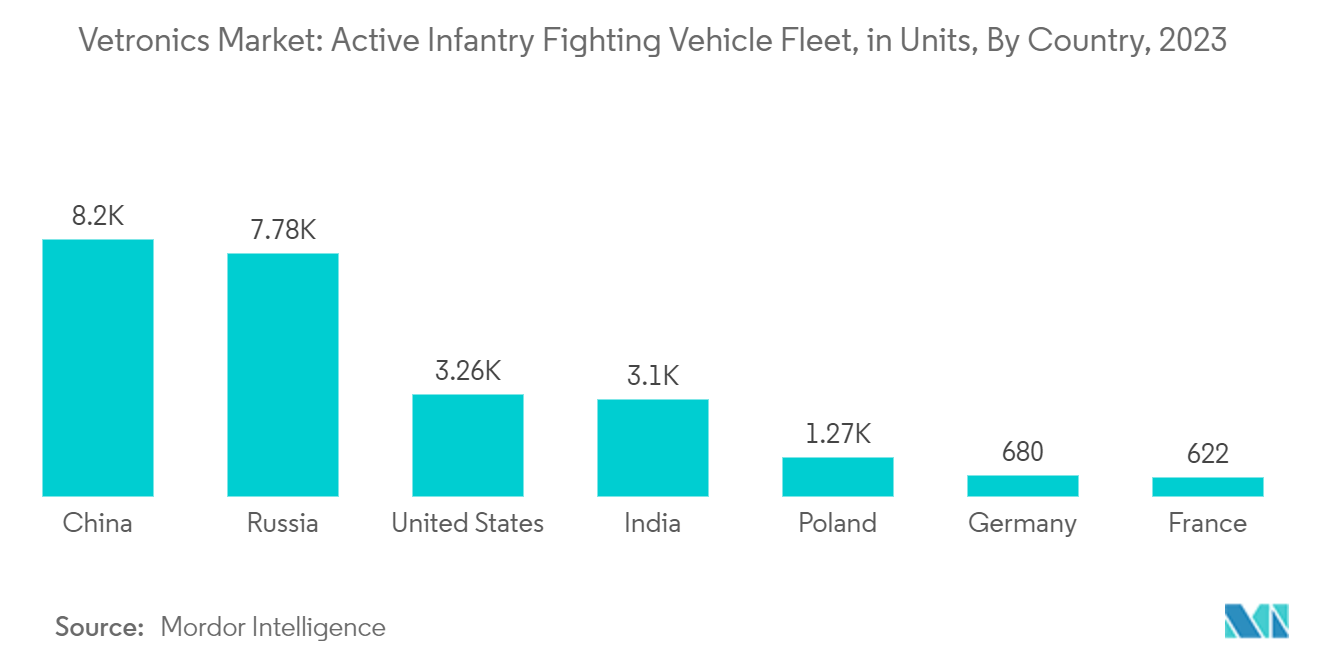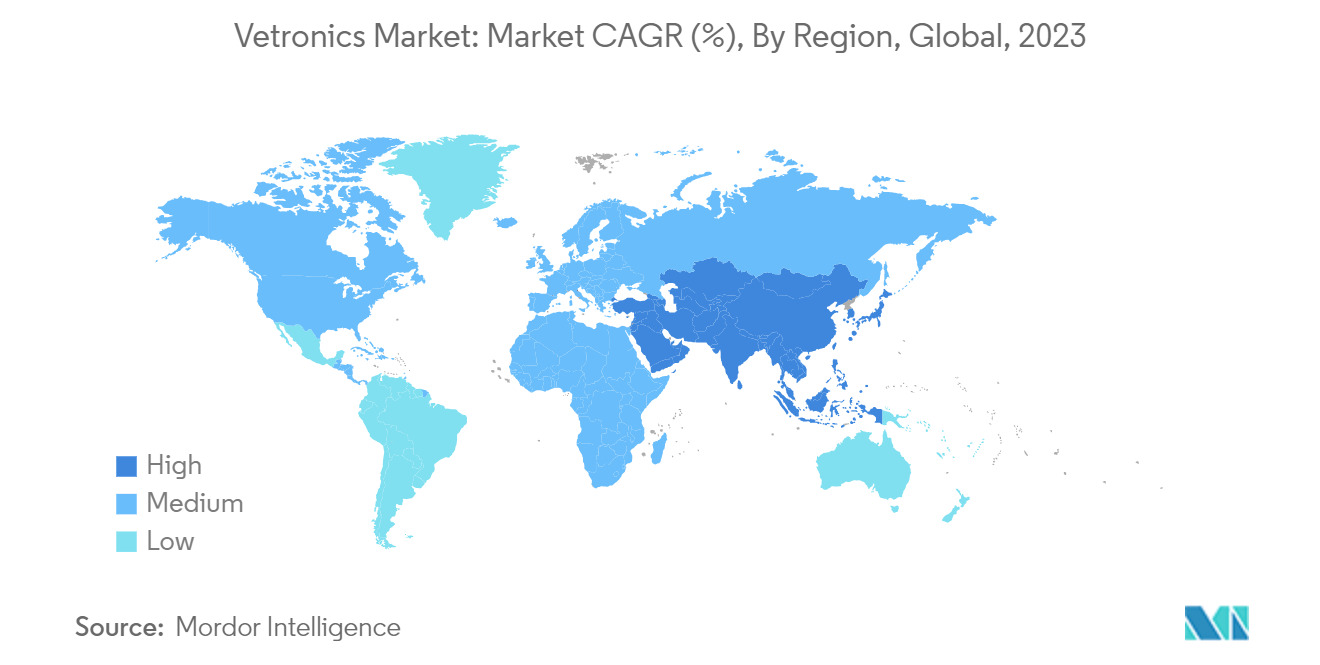Market Trends of Vetronics Industry
Infantry Fighting Vehicles Segment is Expected to Exhibit Significant Growth
- An infantry fighting vehicle (IFV) is an armored vehicle designed to transport infantry into battle and provide direct-fire support. IFVs can be equipped with modular add-on armor and composite or spaced laminated armor to shield against various munitions. The market's growth is fueled by heightened spending on next-gen vehicles and the increasing adoption of advanced electronic systems, which bolster communication. For instance, in 2024, global defense spending surged to USD 2,440 billion, marking a 6.8% increase from 2022.
- Amid increasing defense budgets, armed forces worldwide are channeling investments into next-gen armed vehicle programs and enhancing existing ones for improved efficiency, lethality, and surveillance. This surge in activity is a key driver of market growth. For instance, the M2 Bradley is an infantry fighting vehicle designed for reconnaissance and troop transport. In August 2023, BAE Systems secured a USD 113.1 million contract from the US Army to revamp the M2 Bradley fighting vehicles. The upgrades encompass advanced vetronics, electrical systems, smart power management software, and other cutting-edge technologies.
- Similarly, in December 2023, BAE Systems inked another deal with the US Army, this time worth USD 78.4 million, to transform aging M2 Bradleys into state-of-the-art M2A4 and M7A4 combat vehicles. These overhauls include bolstered vetronics, electrical systems, advanced track systems, and enhanced suspensions, effectively redefining the vehicles as the new Bradley M2A4 and M7A4 combat models. Consequently, the market is set to witness significant growth, fueled by the increasing focus on modernizing existing IFV fleets and the surge in OEM upgrade contracts during the forecast period.

Asia-Pacific Expected to Exhibit Highest Growth During the Forecast Period
- During the forecast period, Asia-Pacific is poised to lead in both procurement initiatives and the subsequent orders placed. Heightened tensions, notably the South China Sea dispute, are prompting neighboring nations to bolster their military capabilities, with a notable focus on military vehicle acquisitions. Countries like China, India, South Korea, and Japan consistently upped their defense budgets to fortify national security. This has led to an observable arms race, highlighted by the escalating defense expenditures of regional giants China and India. In 2023 alone, these nations allocated significant budgets: China at USD 296 billion, India at USD 83.6 billion, Japan at USD 50.2 billion, and South Korea at USD 47.9 billion.
- With increased defense spending, countries in the region are ramping up the procurement and upgrades of military vehicles, fueling the market’s growth. For instance, in May 2024, India contracted Armoured Vehicles Nigam Limited (AVNL) for 693 Armament Upgrades, transitioning Infantry Combat Vehicle BMP2 to BMP2M. Under India's 'Make in India' initiative, this comprehensive upgrade includes Night Enablement, a Gunner Main Sight, a Commander Panoramic Sight, and a Fire Control System (FCS) with an Automatic Target Tracker.
- Similarly, in April 2024, Japan's JDSF engaged Milrem Robotics for three THeMIS unmanned ground vehicles (UGVs) equipped with the Milrem Intelligent Functions Kit (MIFIK) for enhanced navigation and mission adaptability. In addition, in December 2023, Hanwha Defence Australia (HDA), a subsidiary of Hanwha Aerospace, secured a USD 2.4 billion contract with the Australian government for 129 Redback Infantry Fighting Vehicles (IFVs). These vehicles, boasting advanced vetronics, are set to propel the market’s growth positively during the forecast period.


